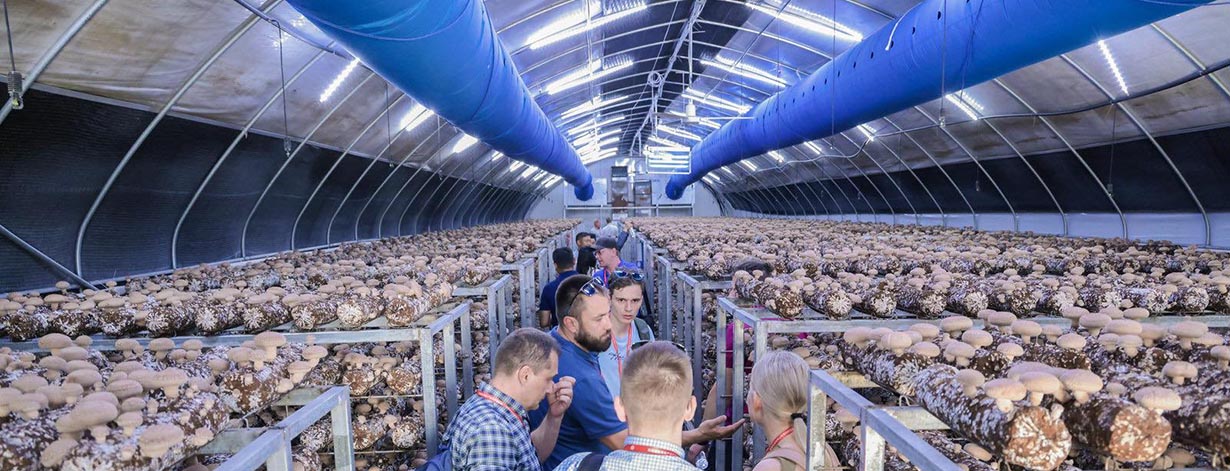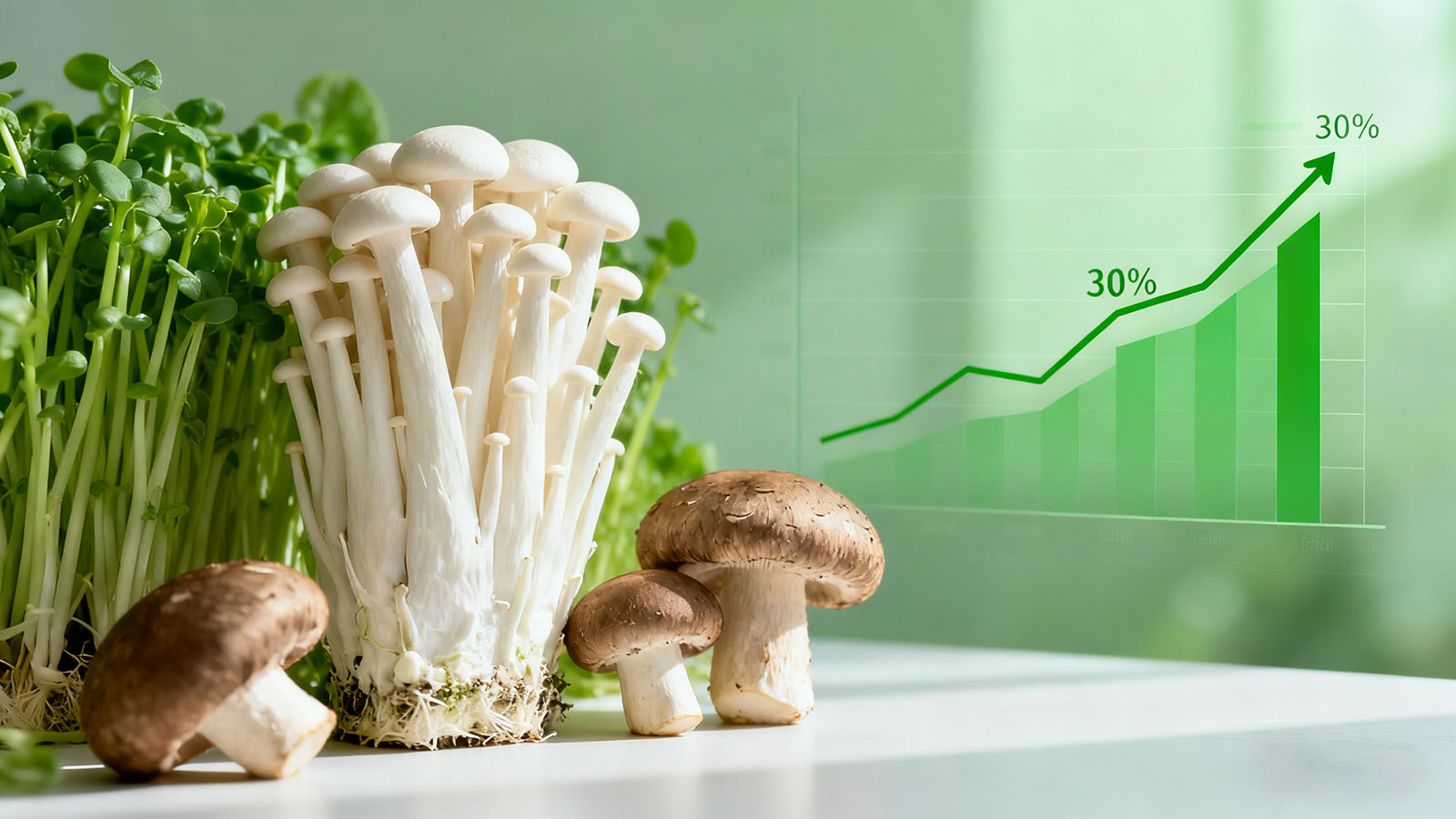
In the grand narrative of rural revitalization, the edible mushroom industry has emerged as a vital engine for activating county economies and increasing farmers' incomes, thanks to its unique advantages of "not competing with agriculture for time nor with grain crops for land." From black fungus in Northeast China to straw mushrooms in South China, from rare fungi in high-altitude regions to factory-grown mushrooms in plains, China's edible mushroom cultivation has developed a diversified, multi-tiered, and multi-modal growth pattern. Through policy support, technical training, market promotion, and other measures, this "small industry" is unleashing "big energy," injecting continuous vitality into local economic development.
Diverse Mushroom Varieties: The Economic Code Based on Natural Resources
China's vast territory and diverse climate provide fertile ground for edible mushroom growth. Leveraging unique ecological conditions, various regions have cultivated distinctive mushroom varieties, forming an industrial pattern of "one county, one industry; one village, one product."
In Guangchang County, Jiangxi Province, the Agrocybe cylindracea (tea tree mushroom) is hailed as the "divine mushroom of China." Since its successful artificial cultivation in 1992, it has become a "mushroom of prosperity" for the region. Today, Guangchang's mushroom varieties have expanded from a single tea tree mushroom to over 20 types, including morel mushrooms, Hypsizygus marmoreus, and bamboo fungus. In 2022, production reached 236 million cultivation bags, yielding over 20,000 tons of fresh and dried mushrooms, with an output value exceeding 500 million yuan. Through technological innovation, the growth cycle of morel mushrooms has been reduced from 90 to 50 days, with per-mu (Chinese acre) yields surpassing 1,000 kg, making it a new wealth-generating industry.
Guizhou Province has listed edible mushrooms as one of its 12 characteristic industries, forming three major industrial clusters in southwestern, northwestern, and eastern Guizhou. The province leads the nation in the cultivation scale of Dictyophora rubrovolvata and winter mushrooms, holds pricing power for morel mushrooms in the southwestern region, and dominates over 70% of the market share for king oyster mushrooms in Guizhou and Chongqing. In 2023, the province's mushroom cultivation reached 6.14 billion bags, producing 2.214 million tons with an output value of 27.74 billion yuan, selling both domestically and internationally.
Pingquan City, Hebei Province, focuses on shiitake and oyster mushrooms, establishing the largest edible mushroom trading market in northern China. Annual production exceeds 635,000 tons, with a comprehensive industrial chain value surpassing 8 billion yuan, covering over 60 domestic cities and 16 countries and regions. Gutian County, Fujian Province, known as the "Edible Mushroom Capital of China," produces over 90% of the nation's tremella mushrooms, with shiitake and tea tree mushrooms forming a complete industrial chain and an annual output value exceeding 10 billion yuan.
Table: Regional Specialty Mushroom Varieties and Economic Contributions
|
Region |
Specialty Varieties |
2023 Key Data |
Economic Role |
|---|---|---|---|
|
Guangchang, Jiangxi |
Tea tree mushroom, morel |
21,600 tons, 500 million yuan output |
Pillar industry, employs 30,000 people |
|
Guizhou Province |
Dictyophora rubrovolvata, winter |
2.214M tons, 27.74B yuan output |
One of 12 key industries |
|
Pingquan, Hebei |
Shiitake, oyster mushroom |
635,000 tons, 8B yuan output |
Pricing hub for northern China |
|
Gutian, Fujian |
Tremella, shiitake |
90% of national tremella, >10B yuan |
China's edible mushroom capital |
|
Tianzhu, Gansu |
Highland mushrooms |
90M bags, 839M yuan expected output |
New engine for rural revitalization |
Innovative Promotion Models: Value Leap from "Field to Fork"
The sustainable growth of the mushroom industry relies on scientific and effective promotion models. Through mechanisms like "government guidance, enterprise leadership, cooperative organization, and farmer participation," regions have built a full industrial chain integrating "production + processing + sales," ensuring mushrooms move directly from farms to markets.
Guangchang County innovated with an "agriculture-photovoltaic complementarity" model, constructing 15 photovoltaic greenhouses in Shuinanwei Township, enabling "electricity generation on the roof, mushroom cultivation below." This approach increased tea tree mushroom yields by 10%, reduced disease rates, and generates over 1.3 million kWh annually. By 2025, tea tree mushroom output is projected to reach 150 million yuan, with photovoltaic power contributing 27.6 million yuan. The county also established a three-tier cold-chain logistics system, partnering with local logistics firms to ensure efficient circulation of mushroom spawn, bags, and fresh products.
The "cooperative + base + farmer" model is widely adopted. In Dongkeng Village, Yangxi Township, Guangchang, a tea tree mushroom cooperative provides farmers with spawn, technology, and sales services. Through a "Party branch + village enterprise + leading company + farmer" model, 1,065 mu of forest land was repurposed for a demonstration park integrating forestry, herbs, mushrooms, and tourism, boosting rural tourism. In 2023, the village's per capita income reached 70,000 yuan, with collective income exceeding 1 million yuan and fixed assets surpassing 7 million yuan.
E-commerce platforms have opened new sales channels. Guangchang's "Nine Peaks" brand expanded via livestreaming and online sales, with Dongkeng Village driving over 8 million yuan in agricultural product sales through rural tourism. Guizhou's "Guizhou Mushrooms Go Global" initiative promoted premium varieties like bamboo fungus and morel mushrooms nationwide through exhibitions and e-commerce, achieving premium pricing.
Large-Scale Cultivation: Small Mushrooms Support Big Industries
Large-scale, standardized cultivation is key to enhancing efficiency. Industrial parks and factory production have shifted cultivation from scattered to intensive, boosting competitiveness.
Guangchang's modern agricultural demonstration zone spans 3,614 mu, integrating national agricultural and sci-tech parks. In 2022, 10 million yuan in central funds upgraded tea tree mushroom greenhouses, with subsidies of 130 yuan per square meter. The county now hosts 13 mushroom production and processing firms (including 9 municipal-level leaders) and 37 cooperatives, forming a large-scale production framework.
Pingquan, Hebei, transitioned from scattered plots to industrial parks, developing over 150 new varieties and technologies and 100+ processed products. Its northern China trading market serves as a pricing and distribution hub, influencing growers within a 500 km radius.
In Guizhou, southwestern Qianxinan hosts the nation's largest Dictyophora rubrovolvata base, adopting "rice-mushroom rotation" to maximize land use. Southeastern Qiandongnan cultivates shiitake and wood ear mushrooms under forests, increasing annual income by 3,000 yuan per mu without deforestation.
Technical Training: Infusing "Tech DNA" into Industry Growth
Technology drives high-quality development. Training systems, expert recruitment, and research platforms elevate growers' skills and industrial upgrades.
Guangchang established a mushroom research institute, Jiangxi Organic Mushroom School, and an academician workstation, partnering with Jiangxi Agricultural University and provincial academies. Over 10 million yuan funded 300+ tech dispatches to poverty-stricken villages, training 2,000 technicians and leaders in 60+ sessions. Xie Yuantai, a national poverty alleviation innovator, developed lotus shell substrate techniques, shortening cycles and raising yields, now widely adopted.
Guizhou's "Tech Dispatcher Plus" program sends experts for field guidance. In Qiandongnan, dispatchers' forest morel techniques raised yields by 20%, benefiting 5,000+ households.
Pingquan collaborates with research institutes, fostering "local experts." Over 2,000 technicians now support the industry.
Table: Regional Technical Training and Outcomes
|
Region |
Training Measures |
Technical Achievements |
Economic Impact |
|---|---|---|---|
|
Guangchang, Jiangxi |
300+ tech dispatchers, 2,000 trainees |
Lotus shell substrate, morel cycle cut 44% |
Farmers earn 20,000+ yuan yearly |
|
Qiandongnan, Guizhou |
One-on-one expert guidance |
Forest morel tech, yield +20% |
5,000 households earn 15,000 yuan each |
|
Pingquan, Hebei |
2,000+ trained with research partners |
150+ new varieties, 100+ processed products |
Industrial chain value +30% |
Government Support: Policy Dividends Fuel Industry Vitality
Robust policy and funding underpin the mushroom boom. Regions support via planning, subsidies, and market cultivation.
Guizhou's three-year action plan sets targets for scale, processing, and branding, with annual special funds. New standardized bases and processors receive subsidies, and organic certifications earn rewards.
Pingquan integrates mushrooms into rural revitalization, funding spawn R&D and processing, and establishing industry-academic bases. An industrial fund offers credit guarantees.
Tianzhu County, Gansu, subsidizes new greenhouses at 15,000 yuan each and offers loan interest discounts for leaders and cooperatives. In 2024, 90 million bags and 6,684 greenhouses will make mushrooms a "new engine" for revitalization.
Mushroom Prosperity: From "Poverty Alleviation" to "Revitalization"
Beyond economics, mushrooms drive employment, livelihood improvements, and rural transformation.
In Dongkeng Village, Guangchang, once deeply impoverished, tea tree mushrooms transformed fortunes. Collective debt turned into 1 million yuan annual income, and per capita earnings rose from 700 to 70,000 yuan. Mud houses became villas, dirt roads asphalt, with mushroom-picking tours and agritourism attracting 60,000 visitors yearly, creating 100+ jobs. Chen Liping, 32, returned from migrant work to run a B&B, earning 5,000–6,000 yuan monthly: "With more opportunities, young people are coming back."
Guizhou's industry employs 500,000 households, including 100,000 lifted from poverty, averaging 20,000+ yuan yearly. In Qianxinan, Dictyophora rubrovolvata bases employ stay-at-home women and elders, enabling "earning near home."
Pingquan's sector employs 30,000+, 80% rural laborers, spurring packaging, logistics, and catering—"one industry flourishes, all sectors thrive."
China Chamber of Commerce for Import & Export of Foodstuffs, Native Produce & Animal By-Products (CFNA) Mushroom Branch plays an indispensable role in globalizing China's mushroom industry.
Exhibition Organization: The branch spearheads influential events. Since 2007, it has co-hosted 13 China Mushroom Days in Zhangzhou, a premier global platform. The 2023 edition drew 1,300+ international attendees and 70 leading firms, featuring 15 sessions, including keynote speeches and the "One Belt One Road, One Mushroom" strategy forum, alongside a premium product exhibition fostering trade dialogue. The 2023 Zibo Shiitake Expo, also led by CFNA, gathered experts to discuss industry trends and globalization, attracting 134 exhibitors showcasing mushrooms, machinery, and supplies, enhancing global collaboration. The 2024 Linqing "Ancient Mulberry Garden Sanghuang & Golden Ear Conference" hosted 500 participants, including experts from Taiwan, South Korea, and Canada, advancing cross-border technical exchange.
Government Collaboration: CFNA delivers impactful partnerships. In 2024, it organized Shiyan City’s "Wudang Mountain Delicacies" regional brand forum, announcing a 6.801-billion-yuan brand valuation and releasing 2024’s top shiitake and wood ear dish rankings, while securing 1.6 billion yuan in 11 project deals. At the Xiamen Mushroom Innovation Expo, Guan County signed a strategic pact with CFNA to accelerate lingzhi mushroom expansion globally. Earlier, Linqing’s multi-year Sanghuang conferences, co-hosted with Liaocheng City, forged end-to-end industrial chains.
Global Team Support: CFNA integrates worldwide resources. It connects upstream international suppliers of spawn, raw materials, and smart equipment with domestic firms, facilitating tech transfer—e.g., via expert-led spawn R&D forums. Partnering with global bodies like the International Franchise Association, it diversifies export channels, shifting from traditional markets to supermarkets, e-commerce, and food processing abroad. Its decade-old Xiamen Mushroom Innovation Expo, featuring the "International Mushroom GI Mutual Recognition Initiative," aligns Chinese geographical indications with EU, ASEAN, and East Asian standards, unlocking overseas markets.
From Guangchang’s "agri-PV symbiosis" to Guizhou’s "mushrooms go global," from Pingquan’s trading hub to Gutian’s industrial chains, edible mushrooms are scripting a dynamic chapter in local economic growth. With deepening innovation, sustained policy backing, and market expansion, this "mushroom of prosperity" will shine brighter, offering a grand stage for rural revitalization, agricultural modernization, and global outreach.




创新博览会LOGO-white.png)


Copyright © China Chamber of Commerce of Food, Native Produce and Animal Products Edible Fungi and Products Branch
京公网安备11010102004652号 京ICP备05021290号-29 | Technical Support: Starify Privacy Policy Sitemap Contact Us
创新博览会LOGO.png)


